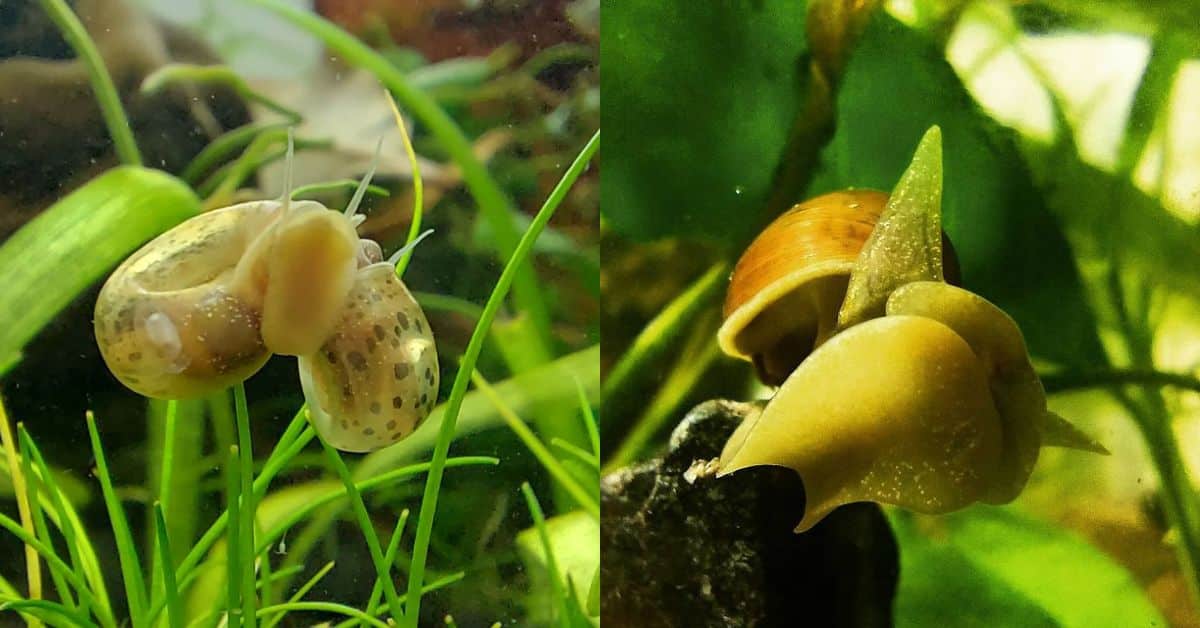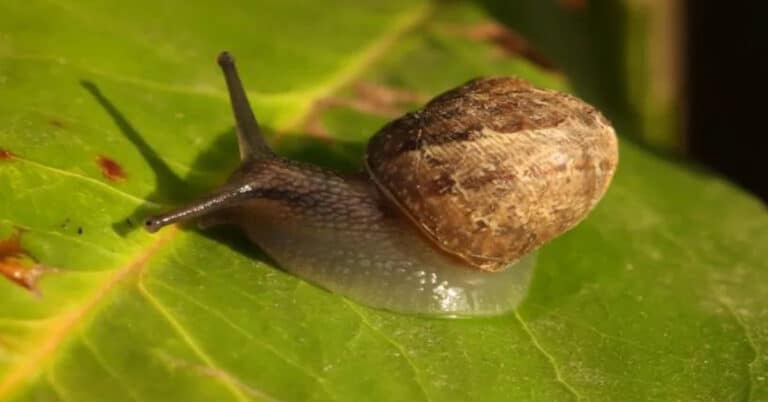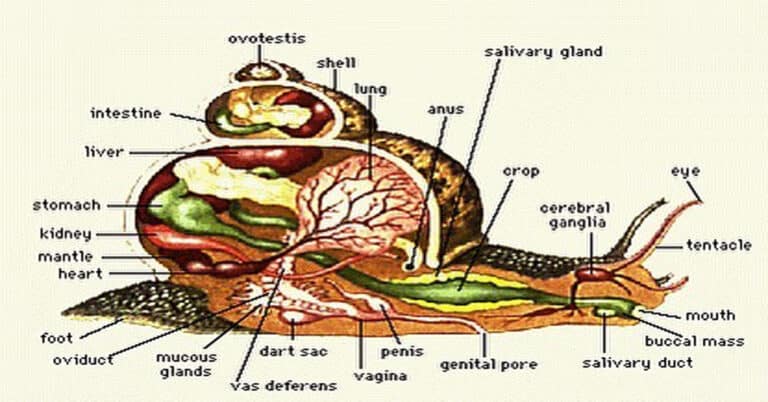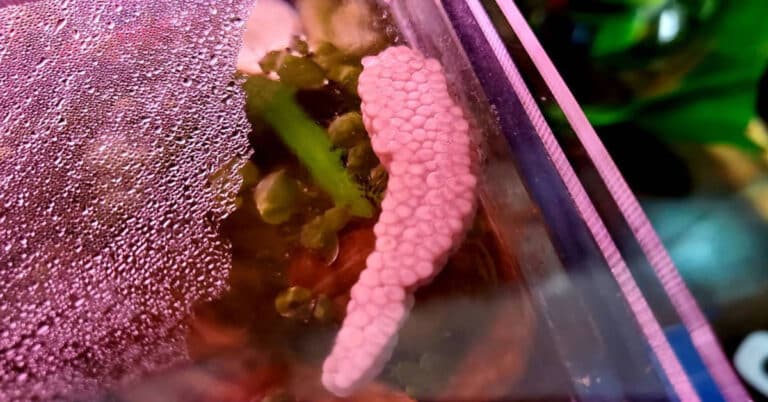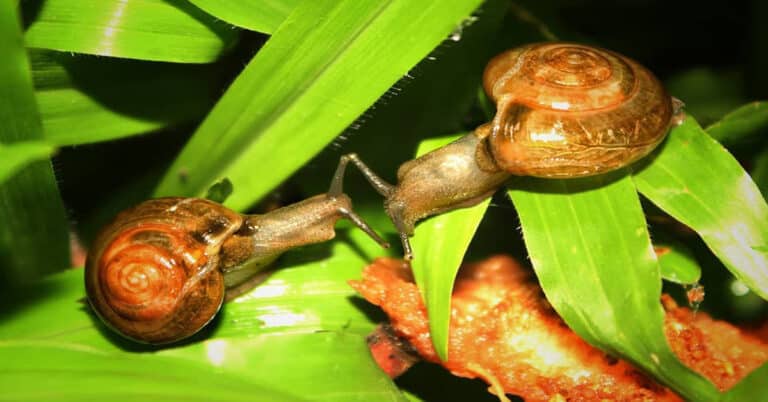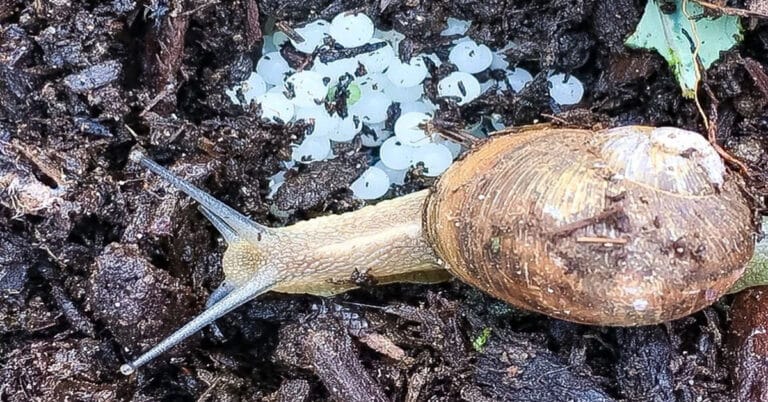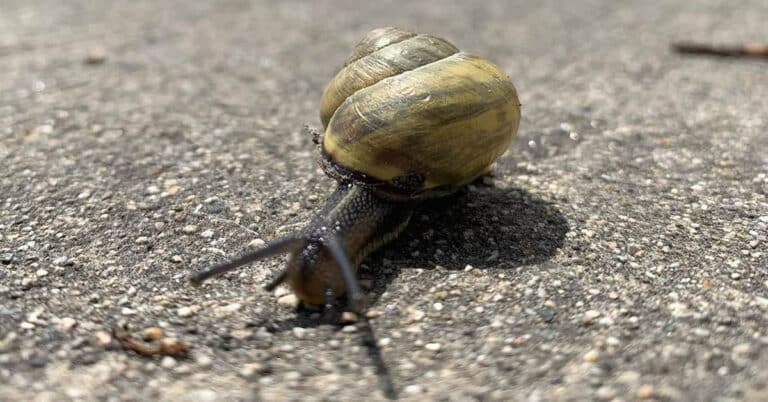Pond Snails – Complete Guide to Essential Components of Aquatic Ecosystem
Have you ever considered pond snails to be unique creatures with fascinating ecological and biological characteristics? If not, you might need to be aware of the significance that pond snails have for aquatic environments!
These fascinating species balance the water’s quality, recycle nutrients to benefit the ecosystem, feed on dead organisms, and regulate microbial expansion.
In this article, we’ll investigate pond snails and learn everything there is to know about the most remarkable characteristics that distinguish them from other living organisms.
What Are Pond Snails? Unique Features & Characteristics
The term “pond snail” is used to refer generally to water snails that reside in freshwater ponds and other habitats of a similar nature. Pond snails are thought to exist in over 60,000 different species worldwide. They can be conveniently gathered in the field and are widely distributed in lakes, ponds, wetlands, and canals in Europe. These days, you can find them in northern Asia, northern America, and even New Zealand.
Pond snails are bipolar breathers. They possess primitive lungs and can obtain oxygen either through their skin or by surface breathing. For aerial respiration, the snail needs to surface, release its breathing pore, and relax the relevant respiratory muscles. Despite primarily breathing air, pond snails can survive only 2 to 24 hours without water.
Pond snails have narrow openings and sharply curved shells, but there are regional variations in the size and shape of the shells. The physical appearance of the shells is also influenced by the external environment and the snail’s age.
The shell is often without any noticeable markings. However, it can vary in color from yellow to varying shades of brown. In certain situations, the shell may also have tiny dark patches. According to scientific studies, pond snails have been observed to reach total lengths of between 3 and 7 cm. However, they often won’t get any taller than 2.5 to 5 cm in freshwater tanks. Pond snails often live in captivity for 1.5 to 3 years.
5 Most Famous Types of Pond Snails
1. Dwarf Pond Snail

The Dwarf Pond Snail might reside in both transient and permanent freshwater habitats. The species is frequently found in ponds, lakes, streams, rivers, and water canals. The Dwarf Pond Snail’s shell has a maximum length of 12 millimeters and a width of 2.5-6 millimeters. Due to the threat posed by contemporary agricultural techniques, the population of dwarf pond snails is decreasing in Europe.
The primary sources of food for Dwarf Pond Snails are seaweed and fresh or decomposing plants. They can survive even at extremely high altitudes in the Northern Bolivian Altiplano, which is situated between 3800 and 4100 m above sea level. Dwarf Pond Snails are amphibious creatures that can withstand prolonged dry conditions. It is claimed that they can survive extended periods of drought in mud for up to 4.5 months.
2. Ramshorn Pond Snail
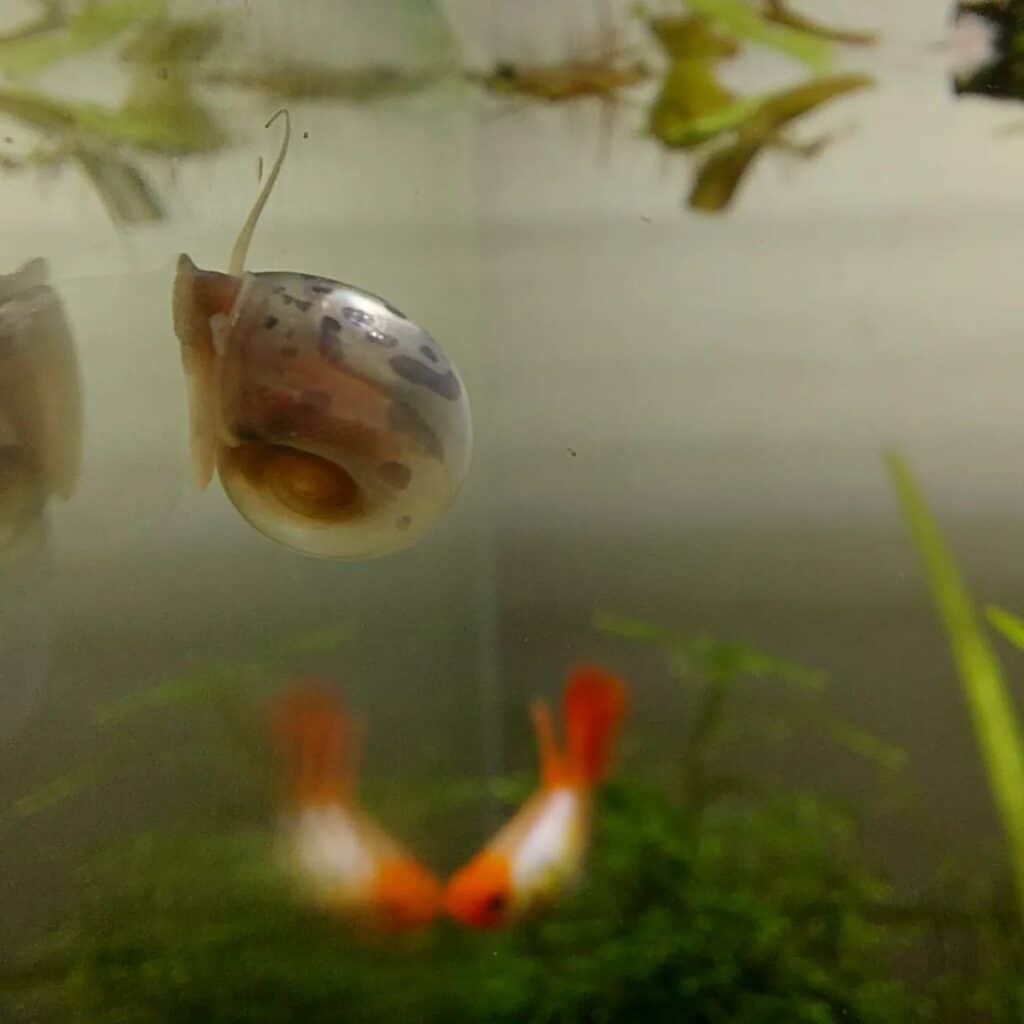
The Ramshorn Pond Snail has two distinct skin color varieties: black and red. The red variety lacks the dark skin pigment melanin, resulting in a bright red appearance that mirrors their blood coloring. In contrast to the greenish hemocyanin found in the blood of other snails, their bloodstream comprises red hemoglobin.
Even though the majority of Ramshorn Snails are incredibly small, some can grow up to a length of 2.5 centimeters. The entrance pore of Ramshorn Pond Snails is pointing downward and spiraling in a clockwise direction. Ramshorn snails have only one pair of tentacles, each with an eye spot at the base, and lack an operculum, like all other air-breathing water snails.
3. Wandering Pond Snail
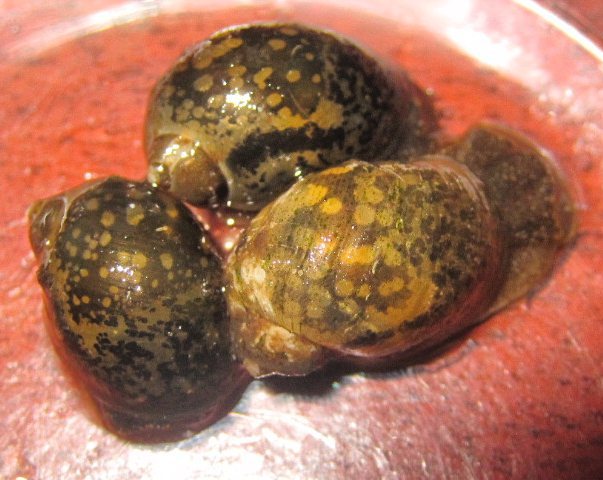
The medium-sized Wandering Pond Snail can reach a maximum length of 3.5 cm, while it typically measures approximately 2 cm. They survive by eating dead fish, waste products, and the corpses of plants. Wandering pond snails can tolerate conditions that would kill most other snails, such as low pH, salinity, and pollution. They can be found in practically every freshwater ecosystem, including ponds, rivers, lakes, ditches, and transitory bodies of water.
Contrary to popular opinion, wandering pond snails rarely consume live plants in aquariums. Instead, they prefer to ingest the phytoplankton from the surface of the leaves.
4. Great Pond Snail
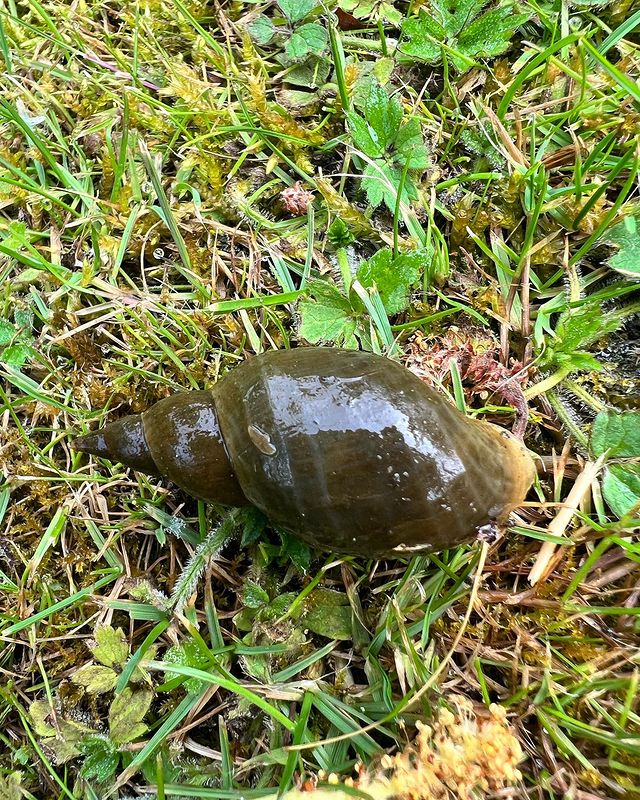
The Great Pond Snail, commonly referred to as Lymnaea Stagnalis is one of the largest freshwater snail species. The shell of a Great Pond Snail can expand to a maximum of 27 mm in width and 54 mm in height, with a broader lasting point between 6 and 8 whorls. It has a dark brown, fragile shell with subtle growth lines.
It has triangle sensors that are normally long and flat and resemble little horns. The snail breathes through well-circulated feelers by inhaling water’s oxygen. These tentacles are also covered in tiny, colorful flecks, just like the upper side of the snail’s body. The large, oval foot is left partially exposed outside the entrance since the snail’s body cannot be completely retracted within the shell.
The Great Pond Snail is a common sight throughout Europe. However, it is most frequently discovered in rivers, water-filled canals, and big pond environments.
5. Big Ear Pond Snail
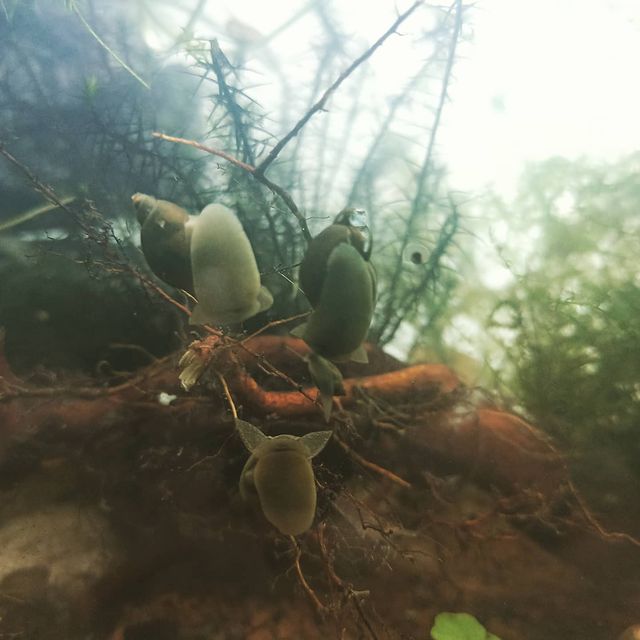
The Big Ear Pond Snail, commonly known as Radix auricularia, is a freshwater snail that inhabits mud-bottomed slow-moving rivers, lakes, and ponds in Europe and Asia. Although this species can tolerate reduced oxygen levels and can survive on rocks or vegetation in low or high-flow habitats, it seems to prefer extensively lentic waters in lakes, wetlands, and slow streams with sandy foundations.
The spire of the Big Ear Pond Snail shell is cylindrical and narrows sharply towards the apex of the shell. When compared to the body whorl, the spire is short, conic, and incredibly small. The overall height of the shell is 14-24 mm, while its breadth is between 12-18 mm.
What Do Pond Snails Eat?
Pond snails are omnivorous, consuming both plants and phytoplankton. They play a critical role in the consumption and decomposition of aquatic plants, both alive and dead. When kept in a tank, pond snails are easy to feed as they consume virtually anything. However, care should be taken to remove any excess food to avoid encouraging overpopulation.
Aside from that, remember that leftovers may cause dangerous chemicals to accumulate. To make matters worse, it may also lead to an infection outbreak, which may result in Scutariella Japonica, Planaria, Vorticella, Hydra, and Green fungus, which can cause significant issues for your fish and shrimp.
Numerous aquatic snails, even those that are frequently regarded as pests, such as pond snails, are unable to digest healthy plants. Instead, they will only consume dead, dying, or extremely stressed plants. Snails usually consume nearly anything that sinks. However, certain dietary habits are preferable in terms of supplying nutrients.
The food options that we have listed below are all healthy and provide an extensive amount of minerals:
- Green wafers
- Canned green beans
- Spirulina
- Fish flakes
- Boiled cabbage
- Spinach lettuce
- Iced peas and bloodworms
Beneficial Role of Pond Snails in Aquatic Ecosystems
Due to their tendency to hitch on pets, turtles, or new plants, snails frequently get into your pond without your intervention. It is impossible to prevent snails from entering your pond since they may enter it via neighboring ponds or nearby rivers.
As an illustration, snails can regulate the microorganisms in your pond, preventing the growth of green water and accumulating heavy metals, toxins, and pollutants. They also consume the waste products and other organic debris in your pond, maintaining its nutrient levels and keeping it cleaner and more organized.
Snails also have a propensity to reproduce very rapidly. While this is usually not a concern since the snails will leave the pond, it still indicates that your pond might get overpopulated with snails, increasing the possibility that they may ingest your plants. As the snail population increases, they may consume the nutrients in your pond, leading to an increase in ammonia, nitrates, and nitrite levels.
How Do Pond Snails Reproduce?
Pond snails are hermaphrodites, which means they can switch from one gender to another to reproduce. Pond snails, on the other hand, are distinct from other snail species as they have separate male and female genders as opposed to just being hermaphrodites like most snails.
The common pond snail has the potential to expand rapidly and dominate an aquatic environment if there are sufficient microorganisms, enough water, and population growth that is uncontrolled. Therefore, encourage your pond snails to pair, maintain clean water, feed them well, and offer them calcium.
After mating, the female will lay sticky egg sacks that she will attach to surfaces and plant leaves all around the pond. Take the eggs out and raise them in a different pond or tank if you want to preserve a large number of snails since there is a possibility that the goldfish will consume them.
Final Thoughts
At first glance, pond snails may seem ordinary, but they exhibit distinctive features and serve an exceptional role in maintaining the balance of pond microbiology.
Their ability to balance water quality, recycle nutrients, consume dead organisms, and control microbial growth is crucial to sustaining the ecosystem. With a proper understanding of these modest creatures, we can fully leverage their contribution to aquatic environments.

Nato is a content writer and researcher with a background in psychology who’s eager to explore the wonders of nature. As a travel enthusiast and animal lover, she hopes to inspire others to discover and cherish the beauty and importance of the natural world.

